Our Verdict
If you’re the kind of user who typically sets and forgets your motherboard, The TUF Gaming Plus Wifi will appeal with its solid value and no fuss core feature set.
For
- Good value for money
- Good VRM and cooling at this price
- Subtle good looks
Against
- 4+8-pin power connectors could be restrictive
- A few more USB at the back would be nice
PC Gamer's got your back
Say hello to the Asus TUF Gaming Z590-Plus Wi-Fi, a gaming motherboard positioned as an entry level Intel Z590 board for Rocket Lake. Asus TUF products have a reliability focus and this, combined with its pricing, and feature set more on the basic side, means it should be a good affordable option for someone after a no fuss, solid and reliable system. But does this TUF have what it takes, is it TUF enou...[snip]
Z590 boards, such as the Asus TUF and MSI MPG Z590 Gaming Carbon W-Fi, are a clear step forward over their Z490 predecessors. Key features include PCIe 4.0 support, enabling Intel users to finally take advantage of the latest and greatest SSDs, a doubling of the CPU-to -hipset DMI bandwidth and native 20Gbps USB 3.2 support.
Add to that unofficial support for crazy-fast DDR4-5000+ memory, higher spec VRM designs and improved networking capabilities and we’re looking at a strong platform. The Intel Core i9 11900K mightn’t impress us but if you strap in aboard the Rocket lake rocket with the likes of a Core i5 11600K or even something entry-level like an Core i5 11400, you’ll be getting a feature rich platform.
Asus’ TUF range—where TUF is short for the The Ultimate Force—has changed a little from its initial incarnation, which emphasised military class reliability. When gaming took over as the main driver of PC sales, the TUF brand pivoted with that trend.
Form factor: ATX
Socket: LGA 1200
CPU support: Intel 10th & 11th Gen processors
Storage: 3x M.2; 6x SATA
USB: 1x USB 3.2 Gen2x2, 2x USB 3.2 Gen 2, 5x USB 3.1 Gen 1, 6x USB 2.0
Video outputs: 1x HDMI, 1x DP 1.4
Network: Intel Wi-Fi 6; Intel I225V 2.5G LAN
Audio: Realtek ALC S1200A 7.1 Channel HD Audio
Price: $260
TUF boards are now positioned as the third tier of Asus’ gaming range, below the flagship ROG and upper mid-tier Strix series. The reliability and stability themes are still present, and their more subtle yellow accented designs have been welcomed by many users who baulk at the price of high-end motherboards. The TUF Z590 Gaming is the kind of board that you can set up, turn on XMP, boot her up, and mostly forget about.
Well, that’s the idea anyway.
The TUF Z590 Plus features a subtle design with a particularly nice white font. You get a couple of little splashes of RGB around the right side. It’s a nice look. There are three M.2 slots with the topmost one supporting PCIe 4.0. The two at the bottom are contained under a single heatsink. Also note the vertical SATA ports that sticklers for cable management might find objectionable. There are a further two regular horizontal ports adjacent to the heatsink. You get six fan headers and two addressable RGB headers too.
There aren’t any real surprises and we’re happy to see USB Type-C case headers becoming commonplace.
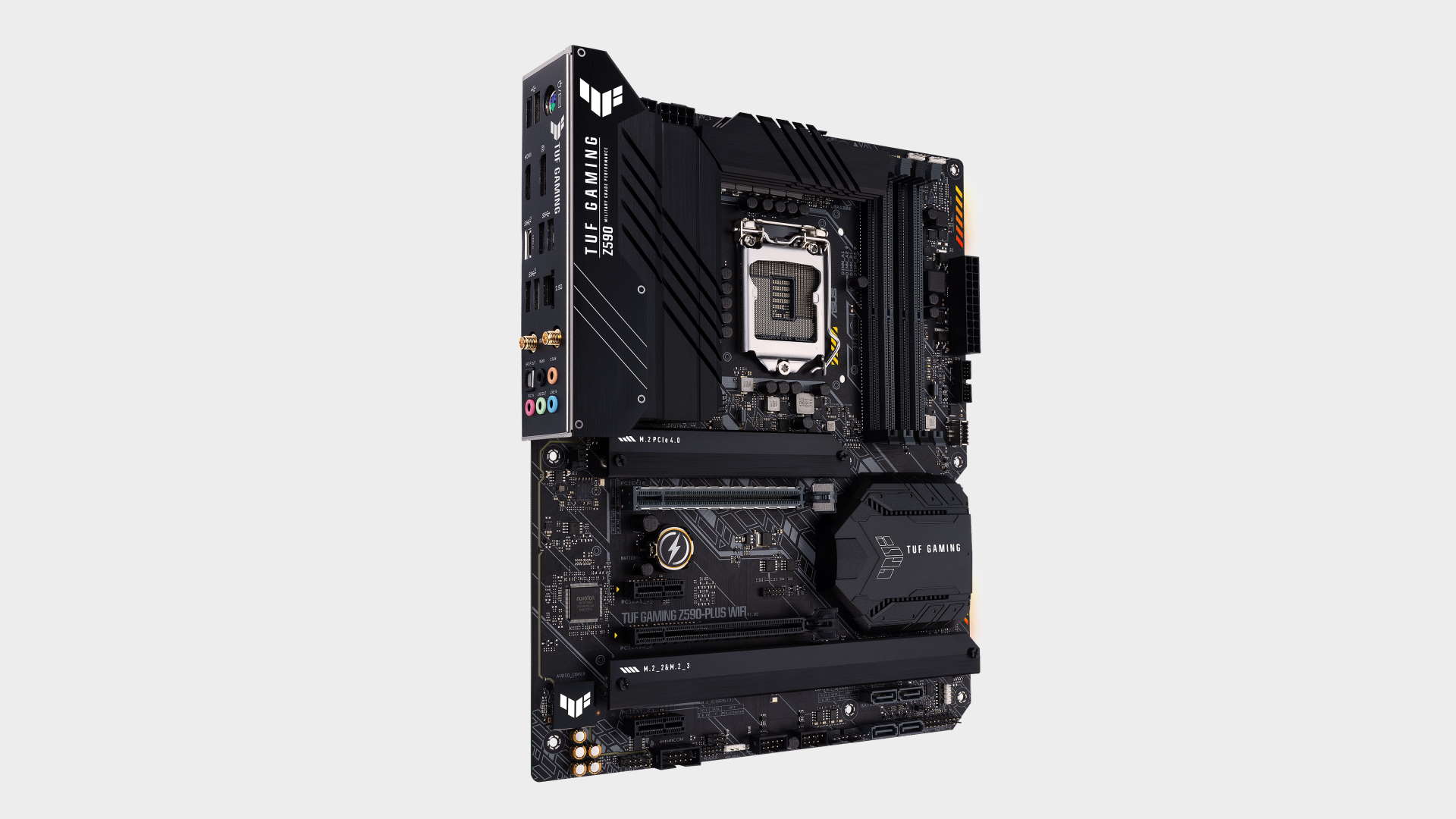
Because of the power-hungry Rocket Lake architecture, cheap VRM solutions are an absolute no-no for Z590 boards. Thankfully the TUF Gaming Z590 has a 14+2 phase DrMOS power delivery system. It’s cooled by two heatsinks that are best described as adequate in terms of size. When subjected to 10 minutes of Cinebench looping, the recorded temperature was just 60°C, which is a very good result. Note that you get six and eight pin power connectors which is enough for an 11900K with adaptive boost, but its not a board that you’d use for serious no offset AVX overclocking.
The I/O sticks to the basics. The Type-C 20Gbps USB port is joined by two USB 3.2 Gen2, two 3.1 Gen1 and two 2.0 ports (The USB naming scheme sucks!) Ideally, we’d like to see a couple more USB ports as they can be taken up quickly. Wi-Fi 6 (not 6E) and 2.5G Ethernet should be adequate for a typical gaming system. HDMI and DisplayPorts are also welcome. A budget Realtek S1200A codec powers the audio system.
System performance
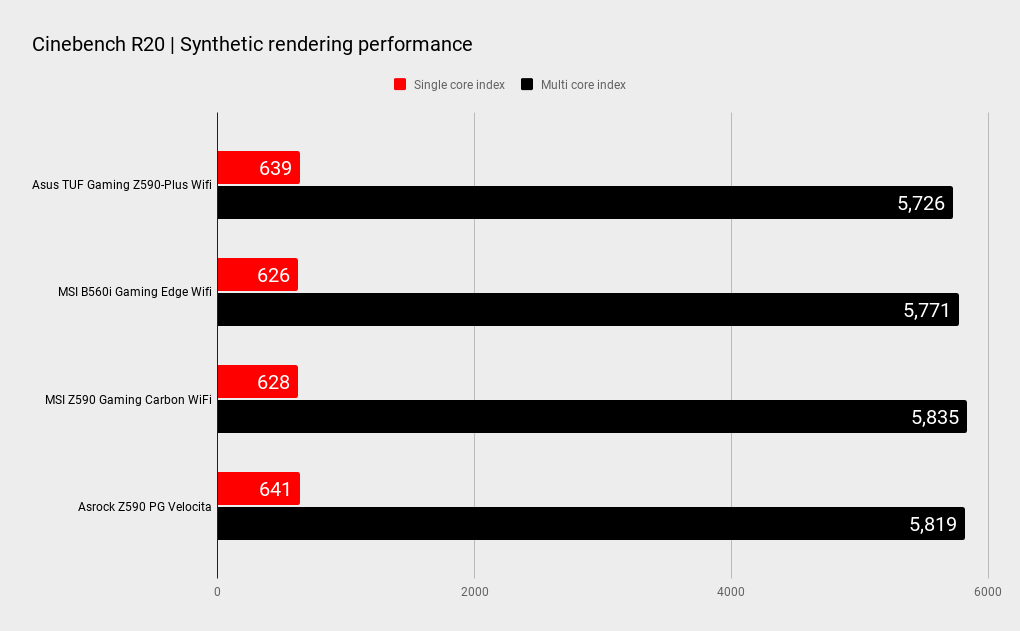
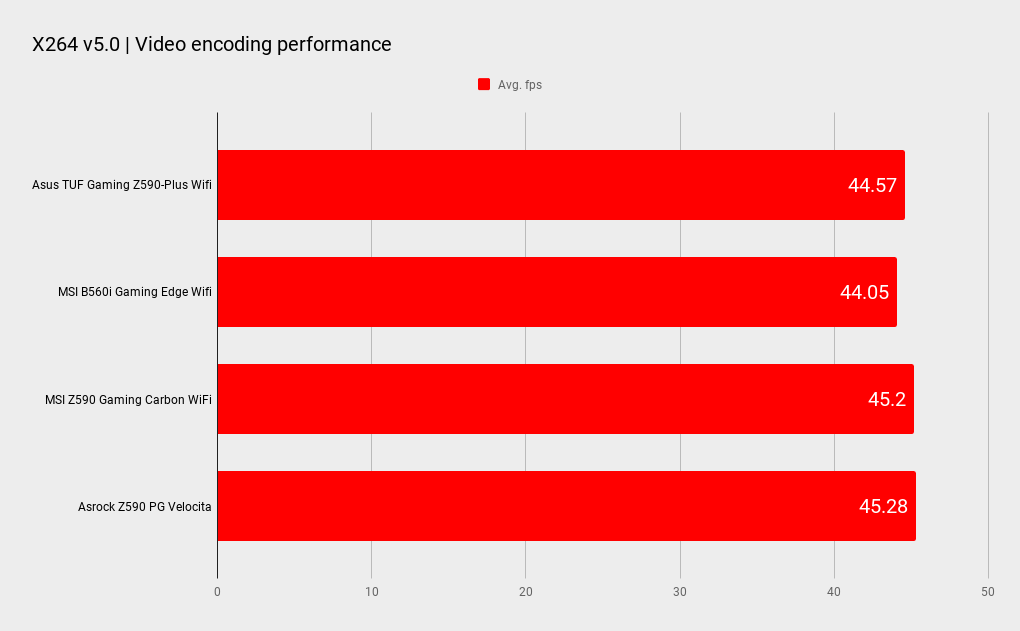

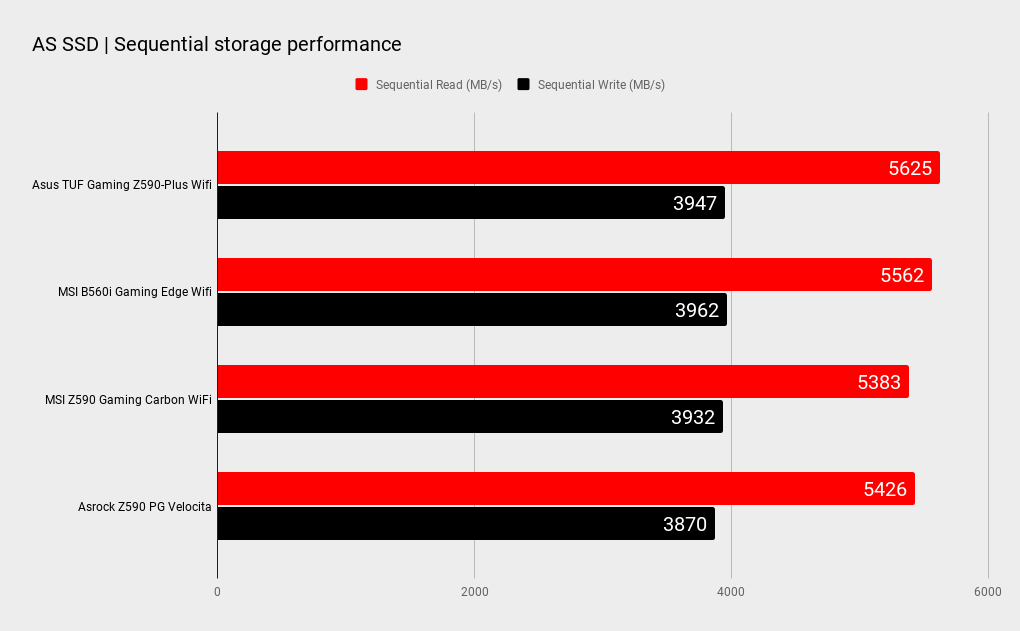
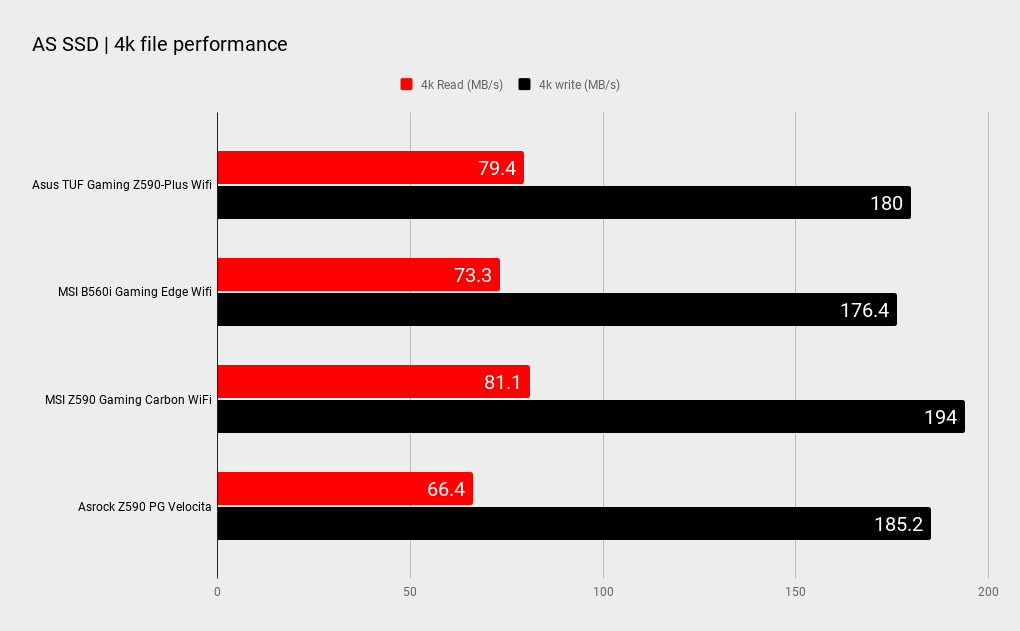


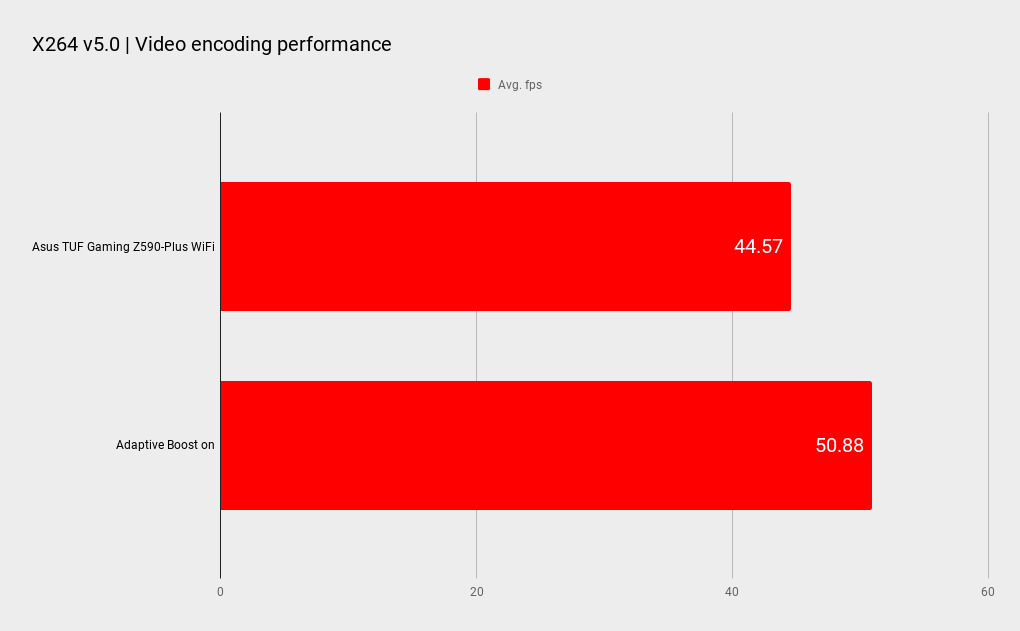

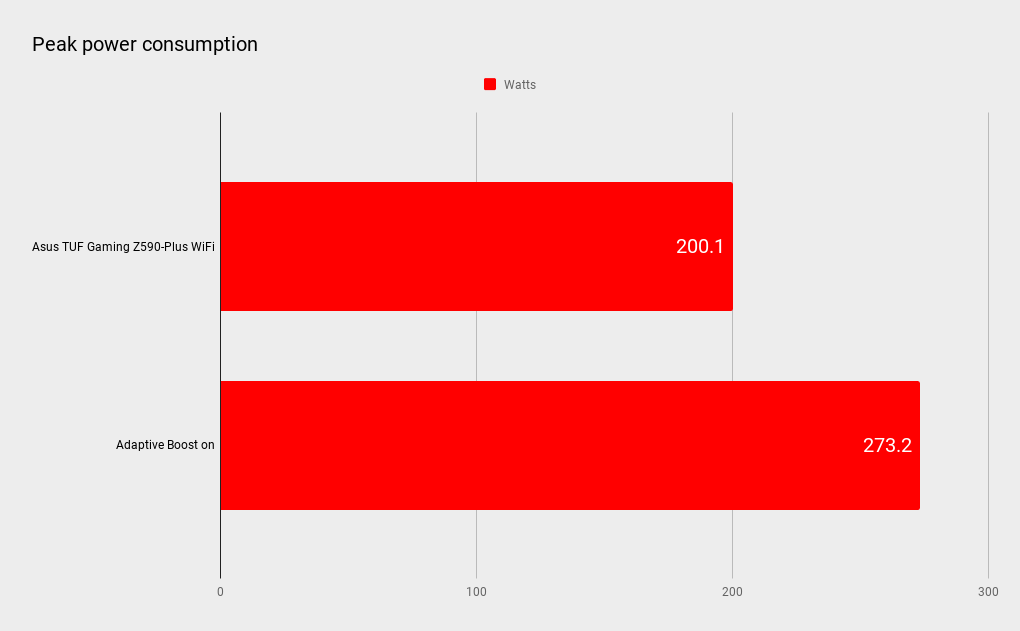
Gaming performance
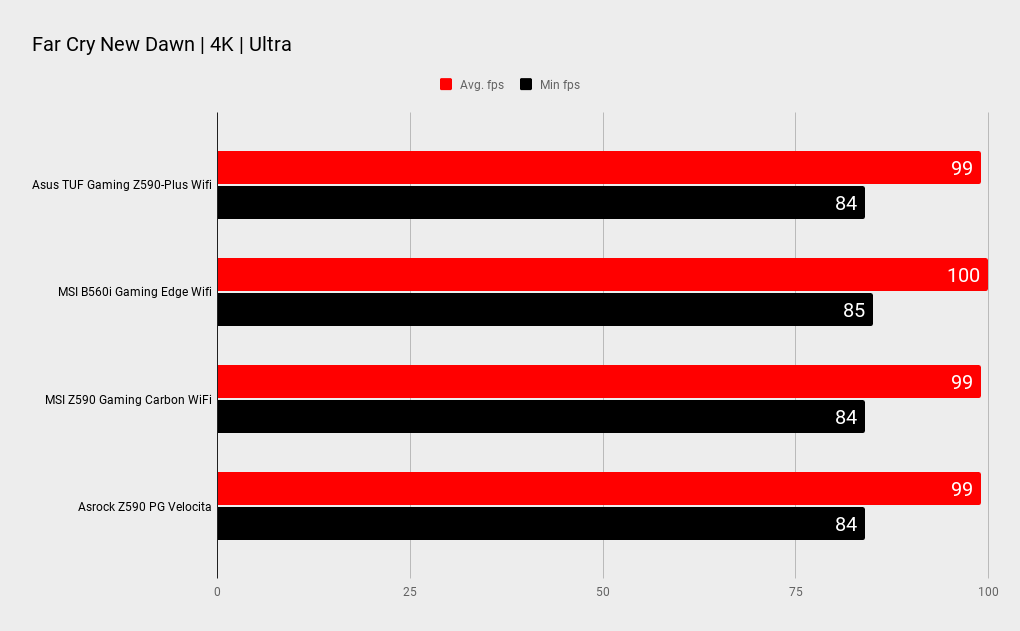

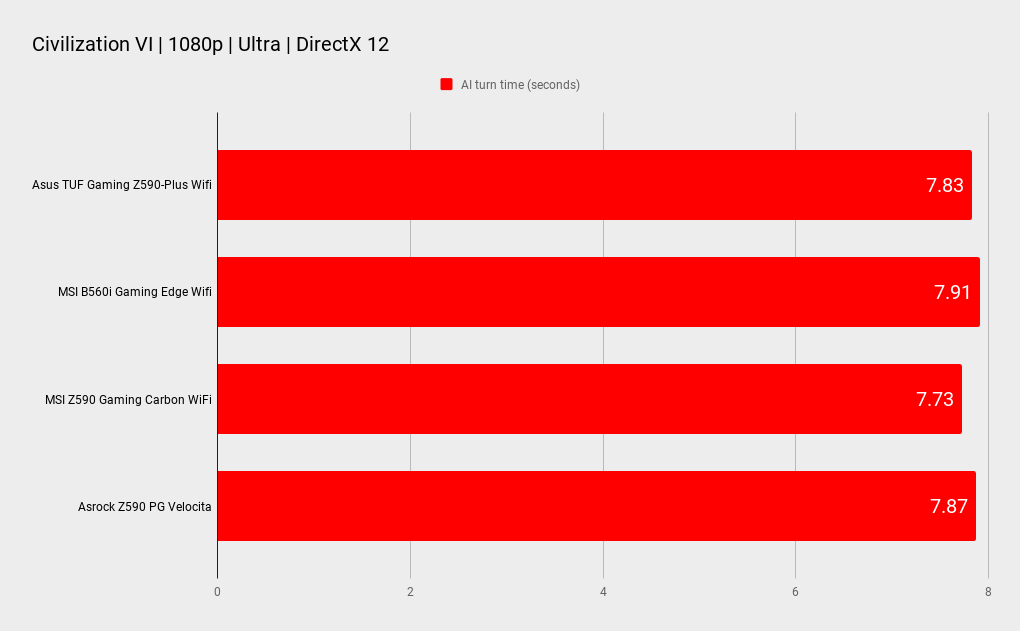

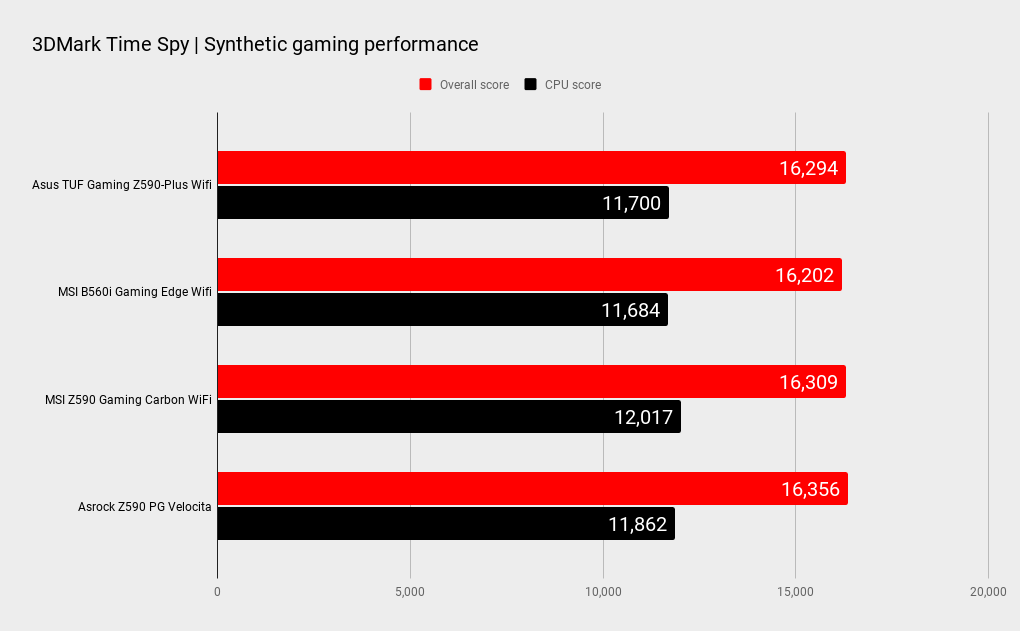
Performance-wise, the Asus performed as expected under default conditions but tended to trail the other tested boards with Adaptive Boost enabled. That’s not much of a negative though, as power consumption and performance are highly correlated with Rocket Lake. The peak CPU power consumption was some 30W less under an Adaptive Boost load compared to the MSI Gaming Carbon.
It appears as though Asus has tuned this board to be a little more conservative with its power management. Given the way Rocket Lake guzzles power, we have no problem with this. With its 4-pin and 8-pin power connectors, it's likely that Asus doesn’t want users smashing out 300W+ loads for extended periods.
If we could look ahead to the RMA figures for Z590 boards in 6 months’ time, this maybe turn out to be a wise decision, especially given the emphasis Asus places on the reliability of the TUF series of boards.
Overclocking doesn’t tell us anything about the motherboard, and only reinforces just how shockingly cooling-limited the Core i9 11900K is, even with a quality 360mm AIO cooler. With 1.42v required to pass heavy 5.1GHz benchmarks, the Asus didn’t object, which is good to see for an entry-mid range board.

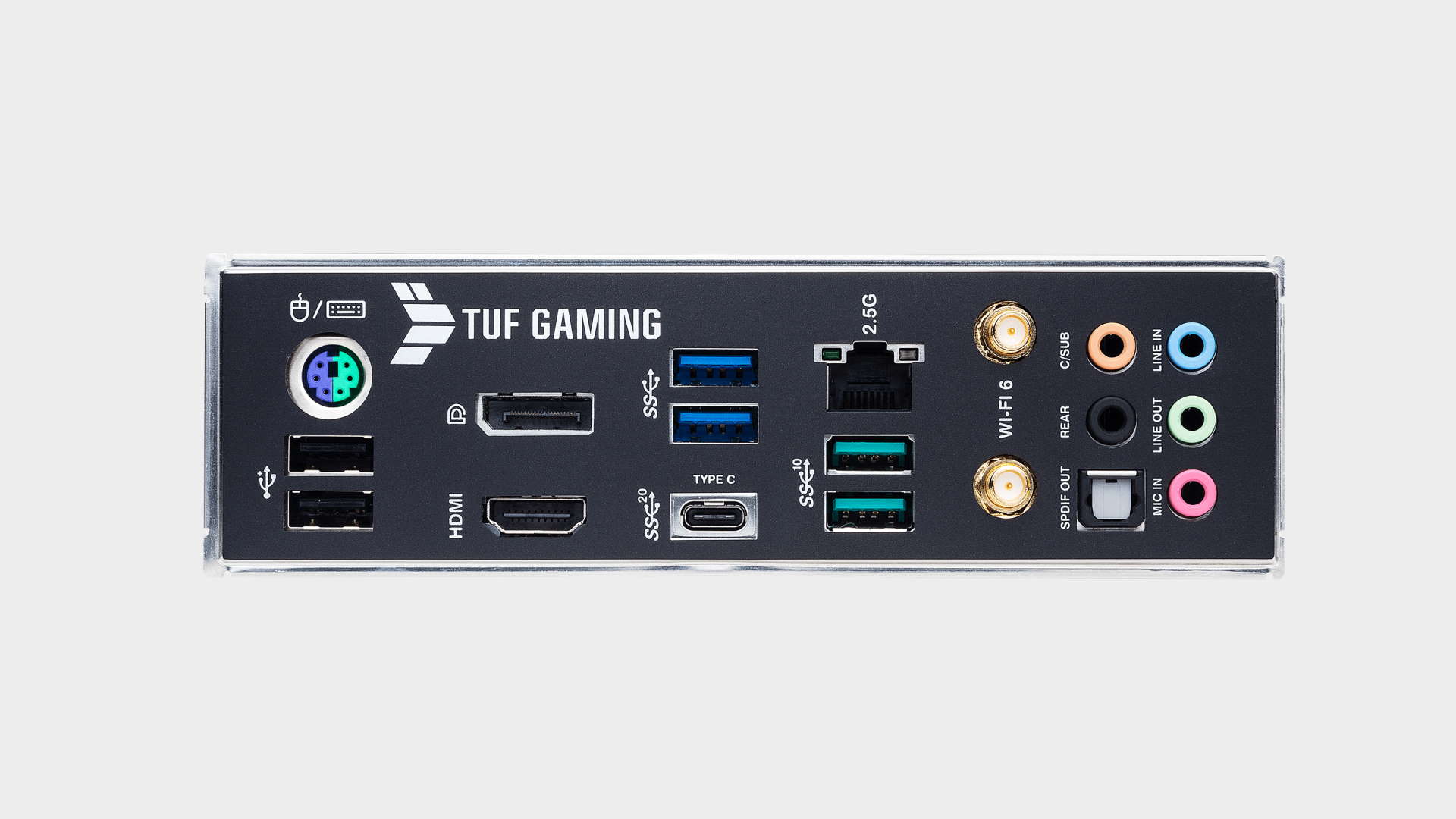
The Asus TUF Gaming Z590 Plus Wi-Fi won’t win the battle of the specs but at $260 you wouldn’t expect it to. It’s a good affordable option for those who laugh at the idea of paying $500+ for a motherboard.
There are a few core considerations that make it a board to consider. Firstly, it will handle a Core i9 11900K with Adaptive Boost enabled, while still maintaining a cool running VRM. Then you get the important core features including Wi-Fi 6, 2.5G LAN and support for the fastest PCIe 4.0 SSDs.
It’s a board for a user who would prefer to allocate money towards a faster GPU or larger SSD instead of paying through the nose for 10G LAN or expensive add-in cards. And I can totally get on board with that. Bang for buck and the true essentials are the name of the game here. If you’re on a budget, it’s definitely one to look out for.
If you’re the kind of user who typically sets and forgets your motherboard, The TUF Gaming Plus Wifi will appeal with its solid value and no fuss core feature set.

Chris' gaming experiences go back to the mid-nineties when he conned his parents into buying an 'educational PC' that was conveniently overpowered to play Doom and Tie Fighter. He developed a love of extreme overclocking that destroyed his savings despite the cheaper hardware on offer via his job at a PC store. To afford more LN2 he began moonlighting as a reviewer for VR-Zone before jumping the fence to work for MSI Australia. Since then, he's gone back to journalism, enthusiastically reviewing the latest and greatest components for PC & Tech Authority, PC Powerplay and currently Australian Personal Computer magazine and PC Gamer. Chris still puts far too many hours into Borderlands 3, always striving to become a more efficient killer.


